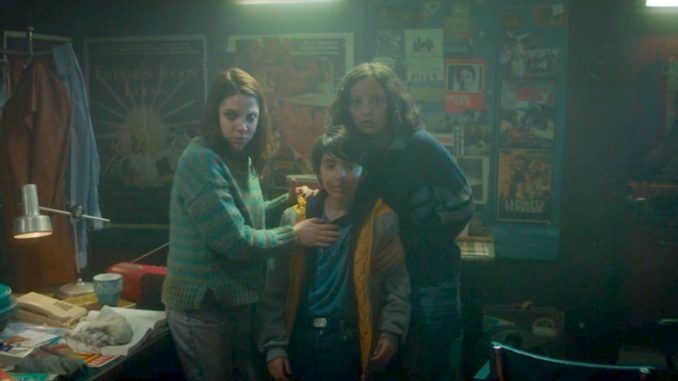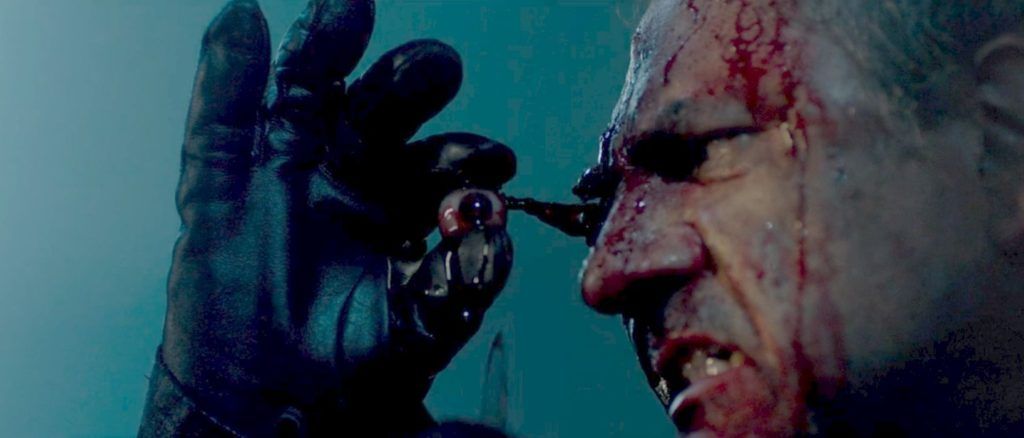
Rating: C
Dir: Maximiliano Contenti
Star: Luciana Grasso, Franco Duran, Ricardo Islas, Pedro Duarte
This one was the result of a late pivot away from a genuinely terrible Portuguese entry, but we’ll get to the gory details of that later in the month. For now, we find ourselves in Uruguay, which… is not a country I know very much about. Tucked in between Brazil and Argentina, it used to be very good at football – as in, the country won the first two World Cups it entered. They’re now overshadowed by those neighbours, but they’re still pretty good, given their population is only 3.4 million – considerably less than Scotland. They beat us 7-0 in 1954, which remains the worst defeat in our history. I will be trying not to hold that slaughter against them for the purposes of this review…
Beyond football? Fray Bentos. It’s the name of the company who were synonymous with corned beef in Britain for decades (the Imperial War Museum has a tin in their collection). Anyone of a certain age will remember their containers. These came with the required key to open them, inevitably resulting in lethally sharp edges that required the empty can to be disposed of with the care befitting a radioactive hand-grenade. But it turns out Fray Bentos is also the name of the town in Uruguay, and their former factory is now a UNESCO World Heritage Site. That award can only have been given by someone who never tried to open one of the company’s tins.
 With regard to movies, the industry is small, as you’d expect given the population. The first horror film listed in the IMDb was as recently as 1987. Crowley, in which the spirit of the notorious occultist ends up in the body of a university professor, was directed by Ricardo Islas – a name which should ring a bell if you’ve been paying attention. More on that later. Islas basically was the Uruguayan horror genre for most of the next two decades, until being joined by Contenti with Muñeco viviente V in 2008. Things have improved a bit since, titles like La casa muda (The Silent House) receiving overseas distribution. However, it and Matinee are the only two purely Uruguayan horror films on the IMDb with 120 or more votes, so options here were limited.
With regard to movies, the industry is small, as you’d expect given the population. The first horror film listed in the IMDb was as recently as 1987. Crowley, in which the spirit of the notorious occultist ends up in the body of a university professor, was directed by Ricardo Islas – a name which should ring a bell if you’ve been paying attention. More on that later. Islas basically was the Uruguayan horror genre for most of the next two decades, until being joined by Contenti with Muñeco viviente V in 2008. Things have improved a bit since, titles like La casa muda (The Silent House) receiving overseas distribution. However, it and Matinee are the only two purely Uruguayan horror films on the IMDb with 120 or more votes, so options here were limited.
This was inspired by its location, being the cinema the director used to go to when he was young. He said, “I just started looking around, and it just felt like this movie theater was calling out for a horror movie to be shot there.” It also feels like it’s a love-letter to the films Contenti likes – you can idle away time by spotting things like the movie posters hanging in the cinema. As usual, this is a bit of a double-edged sword, because frankly, it becomes a bit self-indulgent here. And I’d say, sometimes more than a bit. It might help if I adored the giallo genre as much as Contenti clearly does, but it’s one where I have limited patience for its “style over substance” approach.
The film unfolds over the course of one night in the year 1993, at a fairly decrepit Montevideo cinema (in reality, now gone the way of most such fleapits). One screening of its eclectic programming has finished, and a horror movie is about to begin, before a grab-bag audience. There’s a kid (Duran) who snuck in from the previous show; a homeless guy; a couple on a date; three friends, one of whom is trying to chat up a girl whose friend stood her up; oh, and a raincoat wearing serial killer (Islas), with a imaginative selection of pointy implements. Meanwhile, behind the scenes are the manager/usher Mauricio (Duarte) and projectionist Ana (Grasso), who took over at the last minute from her sick father.
It takes its own sweet time to get to the gore, however. It’s more than half an hour before anyone is killed. To that point, you spend far too much time watching bits of the film being screened – or, worse still, watching people watching the film. It is kinda neat that the movie in question is Frankenstein: Day of the Beast, because it was, in reality, an American film directed by Islas, who is playing the serial killer (although it wasn’t made until 2011, eighteen years after this feature is set). However, it’s a conceit which goes on well past its point is exhausted, and there may be times when you wonder whether you’d be better entertained by finding Beast and watching that instead.
 Once the killer gets into the action, things do improve. In the credits he’s called “Asesino comeojos”, which translates as “eye-eating killer,” and that’s not wrong: he has a jar of them, plucked from his victims with the aid of an ice-cream scoop (!), which he snacks on like pickled onions. Mind you, at another point, eyes bounce down the cinema’s stairs like so many superballs, so I’m not convinced of the biological accuracy here. Not that it matters. There are a reasonable amount of gloopy deaths and other violence (above), and at least the setting does provide an explanation for why everything is so gloomily lit. [Seriously, I had to punt the gamma correction up severely on these screenshots]
Once the killer gets into the action, things do improve. In the credits he’s called “Asesino comeojos”, which translates as “eye-eating killer,” and that’s not wrong: he has a jar of them, plucked from his victims with the aid of an ice-cream scoop (!), which he snacks on like pickled onions. Mind you, at another point, eyes bounce down the cinema’s stairs like so many superballs, so I’m not convinced of the biological accuracy here. Not that it matters. There are a reasonable amount of gloopy deaths and other violence (above), and at least the setting does provide an explanation for why everything is so gloomily lit. [Seriously, I had to punt the gamma correction up severely on these screenshots]
Ana is about the only target or victim worth speaking of here, with all the others little or no better than cannon fodder. While Contenti certainly has a handle on the style, I think he needs to push the accelerator considerably harder, and provide the dizzying delirium for which the likes of Dario Argento and Mario Bava are known. I guess it can be said to be a faithful replica, in that it has the same problems of pacing, logic (we’re never given any reason for the killer’s presence, motive or purpose, which feels lazy) and characterization as many of the giallo films which inspired him. It’s a good reminder of why I’m generally luke-warm to this kind of film.
This review is part of our October 2024 feature, 31 More Countries of Horror.
